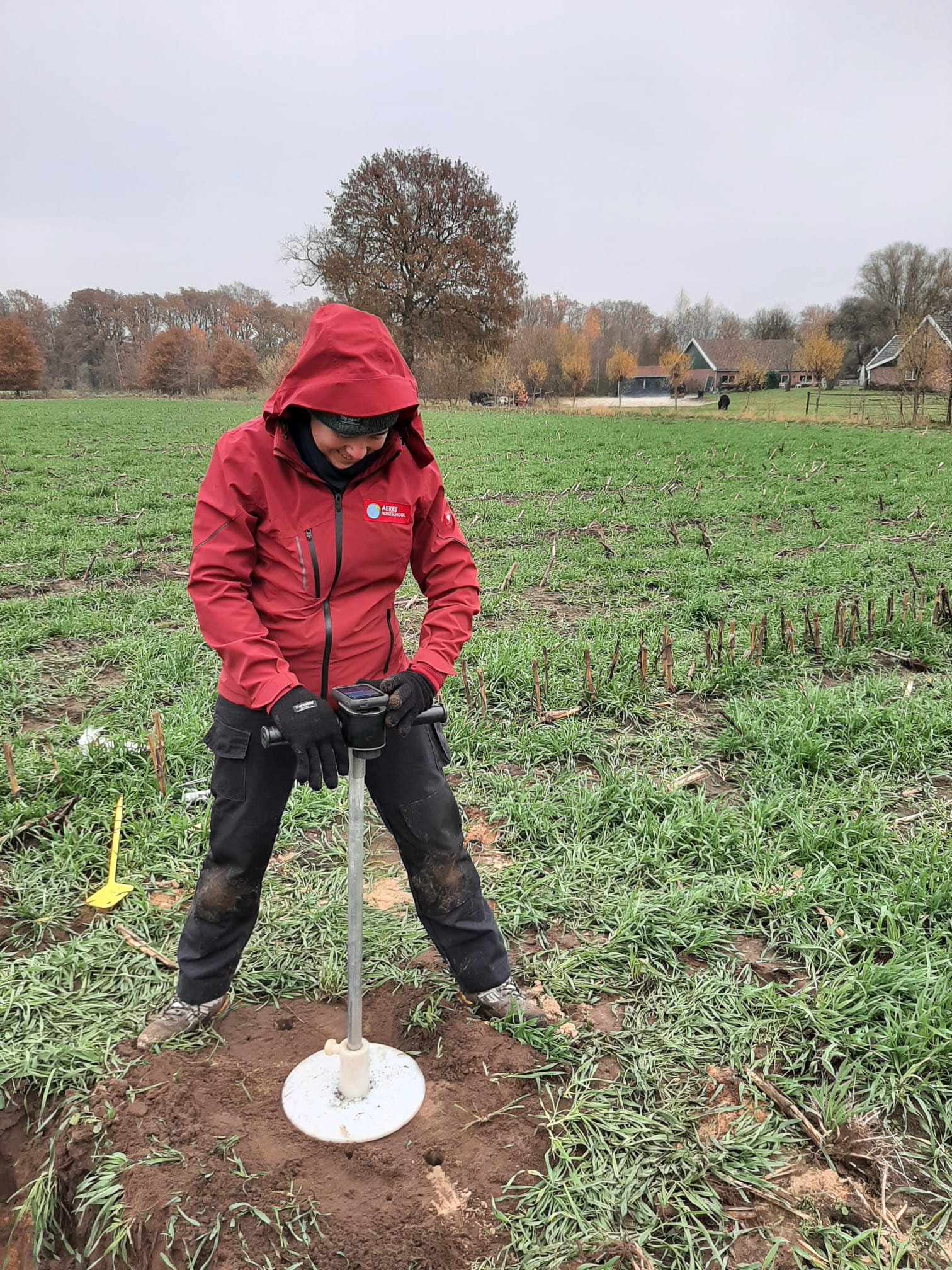


Many agricultural plots struggle with subsoil compaction at a depth of 30-45 cm. Soil compaction occurs when the soil becomes denser and deforms under mechanical stress, such as that caused by agricultural machinery. As a result, the production capacity is affected and the water holding capacity of the soil is reduced. With RhoC, the new soil density meter, soil density can now be measured in a fraction of the time.

As agriculture intensifies, machinery used for agriculture is constantly getting bigger and heavier. This causes compaction and reduces the ability of crops to take root and makes it harder for rainwater and air to be transported through the soil. The effects of soil compaction are long-lasting, often for years, and their effects are not completely reversible. This phenomenon occurs in all soil types in the Netherlands.
Farmers are often unaware of soil compaction. Because soil bulk density is difficult to measure, it is rarely determined, leading to a lack of information and underutilisation of soil compaction measures. However, soil compaction can be recognised by water pooling after rain and poor crop development. For the farmer, this is often already too late, resulting in reduced yields.
If farmers and industry become aware of the process of soil compaction earlier, appropriate measures can be taken. Examples include using lighter machinery, loading and unloading the headland, and avoiding fieldwork under poor conditions. In particular, driving over wet soil causes soil compaction and leads to loss of soil structure.
Both industry and policymakers are demanding a reliable, fast and affordable measurement method to map soil compaction. Medusa Explorations and Medusa Radiometrics have therefore developed a new sensor that can measure soil bulk density. This sensor has been successfully validated in collaboration with Aeres Hogeschool Dronten and Wageningen Environmental Research.
Using the RhoC, the process of measuring soil density in the future will no longer take 5 hours, but only 10 minutes. Soil bulk density can be measured using gamma radiation, allowing a depth profile to be measured in the field through a borehole. With this new device, even less experienced users can perform reliable bulk density measurements. Read the whole report in specialist journal BODEM.